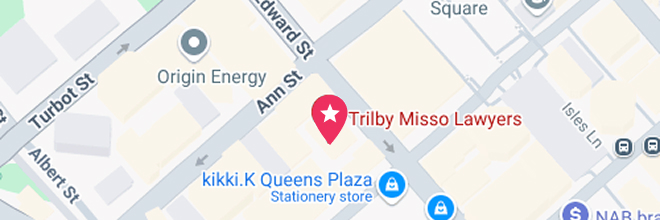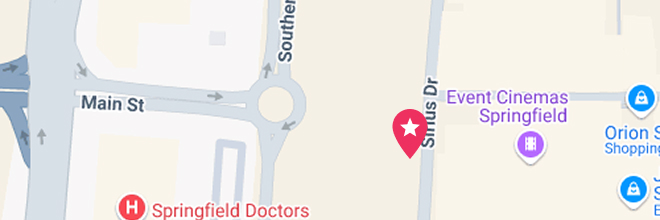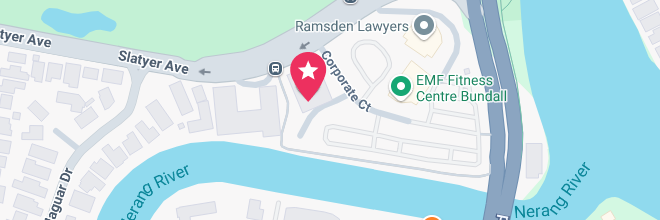Our Brisbane CBD Office
- Suite 400, Level 4/288 Edward St, Brisbane City QLD 4000
- (07) 3910 5470




When you’re involved in a minor car accident in Queensland, the procedure is simple but important: check for injuries, make the scene safe, exchange details, decide if the crash needs reporting, collect evidence, notify your insurer, and if anyone is hurt, start a CTP claim through MAIC. Even low-impact collisions can have delayed consequences, so following the right steps protects your health, safety, and any future claims.
A “minor” car accident usually refers to low-speed impacts where vehicles are still driveable and injuries are not obvious. But in Queensland, there’s no official legal definition of “minor” versus “major.” The law focuses on what actually happened: whether someone was injured, property was damaged, or the road was left unsafe. Because of this, even what looks like a small bump can still require medical checks, insurer notification, and sometimes police reporting.
Queensland Police Service (QPS) has clear thresholds for when crashes must be reported — for example, if someone is injured, if a driver refuses to provide their details, or if the road is blocked. For non-urgent crashes, you can use Policelink online or by phone. If anyone has symptoms after a crash, it’s always recommended to see a GP promptly.
This guide explains the step-by-step procedure after a minor accident in Queensland. You’ll learn when to report, how to collect evidence, what insurers expect, and what to do if you weren’t at fault. We’ve also included FAQs and a free printable checklist for your glovebox.
The correct procedure after a minor car accident in Queensland is to follow a clear set of steps: check safety, secure the scene, exchange details, collect evidence, report if required, see a doctor, and notify insurers. These steps ensure compliance with Queensland law and protect you if injury symptoms appear later.
First, check yourself, your passengers, and others involved.
If anyone is injured or unconscious, dial 000 immediately for emergency services.
If it’s safe, leave vehicles where they are until police or paramedics arrive.
Switch on hazard lights and set up warning triangles if you have them.
Move vehicles to the side of the road if safe and they are driveable.
Stay clear of traffic and avoid standing between vehicles.
Under Queensland law, you must exchange:
Name, address, and phone number
Driver licence number
Vehicle registration number
Insurer details (if available)
Also collect contact details from any independent witnesses.
Capture number plates, vehicle positions, and any road hazards.
Record time, date, and weather conditions.
If you have dashcam footage, save a copy.
Report immediately to police if injuries occurred, vehicles are undriveable, the road is blocked, or a driver refuses to provide details.
For non-urgent matters, use Policelink online or phone 131 444.
Whiplash, headaches, and other injuries may not appear straight away.
A medical record is vital if you need to make a CTP claim later.
Inform your comprehensive or third-party property insurer of the accident.
If you were injured, start a Compulsory Third Party (CTP) claim through the MAIC portal.
In Queensland, you must report a car accident to police if anyone is injured, a driver fails to exchange details, a vehicle needs towing, or public property is damaged. For non-urgent crashes, you can report online or by phone through Policelink on 131 444.
Queensland Police Service (QPS) defines reportable crashes based on what happens at the scene, not whether it’s considered “minor” or “major.” Even a low-speed collision must be reported if:
A person is injured or killed.
A driver refuses to provide their name, address or vehicle details.
A vehicle is undriveable and needs towing.
Damage occurs to public infrastructure (e.g. signs, fences, traffic lights).
A traffic hazard or fuel spill poses danger to others.
If none of these apply, and the crash involves minor property damage only, you generally don’t need police attendance. However, QPS encourages drivers to still lodge a record for insurance purposes using Policelink — either:
Online: Policelink – Reporting | QPS
By phone: 131 444
When in doubt, reporting is always safer than not. An official incident record helps with insurance claims and proves you took responsible action after the collision.
Remember, QPS prioritises injury crashes. For non-urgent matters, use Policelink to keep emergency lines clear. If anyone later develops symptoms from the crash, seek medical attention immediately and mention the date and time of the incident to your GP.
Collecting the right evidence after a minor car accident in Queensland is essential for insurance and potential injury claims. Even if the crash seems insignificant, evidence helps prove what happened, who was at fault, and supports your version of events if questions arise later.
A well-organised evidence pack should include the following:
Take clear pictures of number plates, vehicle positions, and visible damage.
Include road markings, traffic signs, and any skid marks or debris.
Capture close-ups and wide shots for context.
High-quality images are vital for insurer assessments and can prevent disputes about fault or damage later.
Record names, phone numbers, and addresses of everyone involved.
Ask independent witnesses if they’re comfortable providing a short written statement or voice note.
Keep these details stored safely — you’ll need them for your insurer or, in injury cases, for a Compulsory Third Party (CTP) claim.
If you use a dashcam, save and back up the footage immediately. Businesses or councils may also have CCTV that can be requested within days. Acting quickly ensures evidence isn’t overwritten or lost.
In Queensland, it’s common for drivers to feel fine after a low-impact collision, only to develop whiplash, headaches, or back pain later.
Visit a GP as soon as possible, even if symptoms are mild.
Mention the date, time, and details of the accident.
Keep all medical reports, receipts, and referral notes — these form the foundation of a personal injury claim if one becomes necessary.
Write down what happened while it’s still fresh. Include:
Date, time, and location
Road and weather conditions
What each driver said at the scene
Keeping these notes can help when filling out insurer or Policelink forms later.
Collecting strong, factual evidence helps protect you if you later experience pain, dispute liability, or discover vehicle damage not visible at first glance. It’s one of the most important steps in any minor car accident procedure in Queensland.
After a minor car accident in Queensland, you should notify your insurer as soon as possible, even if the crash seems minor. Early notification helps protect your coverage, ensures accurate assessment of property damage, and records your version of events while details are still fresh.
Contact your comprehensive or third-party property insurer promptly after the incident.
Provide details including the time, date, location, and other driver’s information.
Share photos, dashcam footage, and witness details you collected earlier.
Keep the claim reference number and copies of any correspondence.
Even in minor collisions, insurers may inspect damage before repairs begin. Delaying contact could slow down claims or cause complications if fault is disputed.
In Queensland, CTP insurance covers injuries to people, not damage to vehicles or property.
Every registered vehicle automatically includes CTP coverage through the Motor Accident Insurance Commission (MAIC) system.
CTP does not cover vehicle repairs — these are handled through your standard insurer.
If you experience pain, stiffness, or other symptoms days after the crash, it may still relate to the accident. You can:
See your GP for a medical report.
Lodge a Notice of Accident Claim Form through MAIC.
If the at-fault driver is uninsured or cannot be identified, your claim may be directed to the Nominal Defendant under Queensland’s CTP scheme.
It’s common for minor accidents to involve both vehicle repairs and personal injury symptoms.
Report property damage to your insurer.
Report any injury through the CTP process via MAIC.
Keeping the two channels separate helps prevent confusion and ensures each claim follows the correct Queensland procedure.
If you weren’t at fault in a minor car accident in Queensland, your next steps depend on whether the other driver is identified, insured, or unknown. Understanding these pathways helps protect your rights and ensures any personal injury or vehicle damage is handled correctly under Queensland’s insurance framework.
If the other driver accepts fault and has insurance:
Their property insurer usually covers the cost of your vehicle repairs.
You’ll need the at-fault driver’s registration number, insurer name, and incident details (including photos and witness statements).
If the at-fault driver doesn’t have CTP insurance or can’t be identified — for example, in a hit-and-run:
You can still claim for injuries through Queensland’s Nominal Defendant scheme, which acts as the CTP insurer of last resort.
You must lodge your claim within three months of the accident, or at least within nine months if a valid reason for delay exists.
This ensures that even where an uninsured or unidentified driver caused the crash, injured people are still protected under Queensland’s CTP laws.
Queensland Police and insurers will assess available evidence — including photos, dashcam footage, and witness statements — to determine liability.
You should still:
Notify your insurer immediately.
Keep your Policelink reference number if you reported the incident.
Provide copies of all supporting materials when lodging your claim.
While property damage disputes are managed through insurers, personal injury matters are more complex. If you’re unsure whether you can make a claim or need help understanding the process, law firms like Trilby Misso Lawyers operate on a no win no fee basis for injury claims — meaning you won’t pay legal costs if your claim isn’t successful. This ensures fair access to help when navigating Queensland’s compensation system.
What defines a “minor” car accident in Queensland?
A minor car accident in Queensland usually involves low-speed impact, minimal vehicle damage, and no immediate injuries. There’s no legal definition — what matters is whether anyone was injured or property was damaged.
Do I need to report a minor accident in QLD?
You must report a crash if someone is injured, a driver refuses to share details, a vehicle needs towing, or public property is damaged. For non-urgent crashes, use Policelink online or call 131 444.
Can I still claim if pain or symptoms appear later?
Yes. Many injuries such as whiplash or back strain appear hours or days later. See a GP promptly and keep records in case you need to lodge a CTP claim.
What are the 5 main steps after a car accident in Queensland?
Check for injuries, move to safety, exchange details, collect evidence, and notify your insurer. If anyone is hurt, lodge a CTP claim.
What if the other driver is uninsured or drives off?
If the at-fault driver is uninsured or unidentified, you may still be able to make a claim through Queensland’s Nominal Defendant under the CTP scheme.
Do I need a police report number for insurance?
Most insurers request a police or Policelink reference number, even for minor crashes. It confirms that the incident was recorded with authorities.
How long do I have to report a crash in Queensland?
Report injury crashes immediately to police. Non-urgent crashes can be lodged with Policelink as soon as possible — ideally within 24 hours.
Should I see a doctor after a minor accident?
Yes. Even if you feel fine, visiting a GP ensures any delayed symptoms are recorded, which is essential if you later need to make a CTP injury claim.
What happens if I’m not at fault and my car is damaged?
Your insurer may recover repair costs from the at-fault driver’s insurer. If you were injured, a CTP claim can be made against their insurer via MAIC.
What is the Nominal Defendant in Queensland?
The Nominal Defendant is a government-managed body that covers injury claims where the at-fault vehicle is uninsured or unidentified, such as in a hit-and-run.
Kathryn is Trilby Misso’s Chief Executive Officer.
Meet KathrynUse this simple online tool and find out if you have a claim in less than thirty seconds. You can choose to remain anonymous.
Your next step is a small one. All you need to do is give us a call on 07 3910 5470 or complete this form here to arrange a quick chat.
During this initial conversation, we will:

We understand that taking legal action can be stressful, and we’ll do all we can to ease your concerns.
The chat can take place at our place, your place, or by phone. There is no cost, no pressure, and no obligation.
Call 07 3910 5470 or fill out this form, and we’ll get back to you within 2 hours (during business hours). We look forward to meeting you.
enquire now